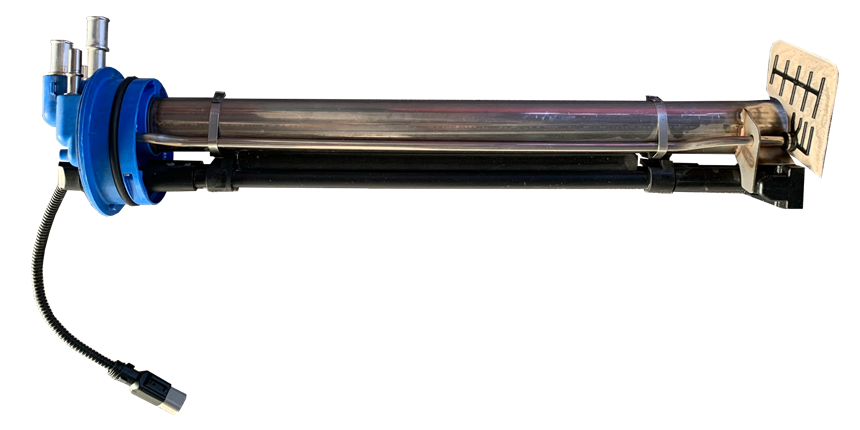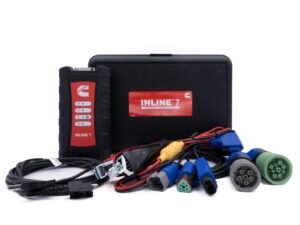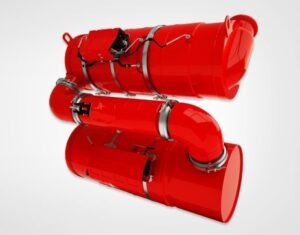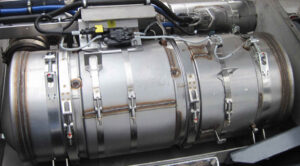Understanding the legislated emissions of Diesel engines
The newest Diesel engine emission standards concern the following four pollutants:
Carbon Monoxide = CO (product of incomplete combustion)
Hydrocarbon = HC (unburned fuel droplets)
Particulate Matter = PM (this can be partially burned fuel, oil, metal particles from wear & tear)
Nitrogen Oxides = NOx (related to combution temperature: higher temperature = more NOx)
A Diesel Oxidation Catalyst (DOC) oxidises CO and HC to Carbon Dioxide (CO2) and Water (H2O) respectivelly.
The Diesel Particulate Filter (DPF) blocks almost all solid particles (PM) from being released to the atmosphere.
So just with a DOC and a DPF in an aftertreament system, we are able to drastically reduce, or even eliminate, 3 out of 4 pollutants.
The last emission “problem” is the Nitrogen Oxides (NOx) and this is taken care of in the Selective Catalytic Reduction (SCR) System. An Exhaust-Gas Recirculation (EGR) Valve also helps reduce NOx, but we’ll focus on SCR systems for now.
The SCR Catalyst cannot complete the job alone. It needs help from the Diesel Exhaust Fluid (DEF), commonly known as AdBlue, Valvoline Premium Blue DEF, Shell DEF, ClearDiesel and many other commercial names.
DEF consists of 67.5% de-ionised Water and 32.5% Urea. A DEF injector injects AdBlue into a “mixer” pipe before the SCR, where it converts to Ammonia (NH3) and then mixes with the exhaust gases. This “mixture” goes through the SCR catalyst and reacts with the catalyst’s coating to help break-down NOx into harmless Nitrogen (N2) and Water (H2O).
What is an AdBlue Quality Sensor?
The Control Module responsible for all Aftertreatment System operations, expects that the DEF mixture consists of 32.5% Urea. All internal calculations of AdBlue quantity, NOx conversion efficiency and SCR Catalyst efficiency use this “magic” number.
Depending on the Emission Certification of a given engine, there might be the requirement, that the Control Module monitors the quality of AdBlue with a sensor.
An AdBlue quality Sensor analyses the Urea concentration in DEF. Practically, it will check if the DEF mixture in the tank consists of 67.5% Water and 32.5% Urea.
*Did you know you can check the AdBlue Urea content yourself? Just use a refractomerer!
How do AdBlue Quality Sensors work?
If you search in the AdBlue Quality Sensor market, you will find that there are two major types of sensors:
1. Ultrasonic sensors
A transmitter transmits an ultrasound signal through the DEF and then reflects back to a receiver. The time it takes for the sound to travel depends on the fluid concentration. The sensor electronics analyse the results and a control module interprets them to Urea concentration.
2. Optical sensors
A light is emitted in the DEF and after interaction with the fluid, a photodetector will detect the remaining light. The sensor’s electronics analyze the data from the photodetector and compare them to calibrated values. The sensor provides an output, which indicates the Urea concentration.
Regardless of the sensor type, the most common way to transmit the sensor signals is through CAN Bus.
Installation and Maintenance of AdBlue Quality Sensors
You’ll typically find the quality sensor in the AdBlue tank. This unit is a combination sensor, which measures DEF level, DEF temperature and DEF/AdBlue Quality.
The unit itself is maintenance-free. However, the AdBlue pickup pipe is part of the assembly and is typically equipped with a small filter. The filter blocks contaminants and helps prevent pump blockage. Check your operation manual to find the service interval of the filter. This is important, because blocked filters cause system pressure problems, leading to fault codes and in turn you might experience a power derate!
Additional content that might worth reading:
What is Diesel Exhaust Fluid or AdBlue?
My diagnostic tool suggestions
Cummins Quickserve Online Account for FREE!











